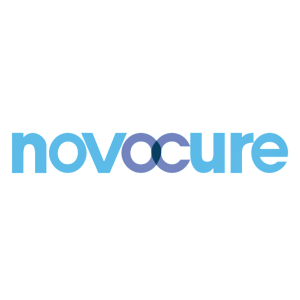TIGER Study Reports New TTFields Therapy Survival Results for Newly Diagnosed Glioblastoma Patients in Germany
Durable survival effect observed in the largest prospective, non-interventional study completed examining TTFields therapy use in newly diagnosed GBM
Topline data to be presented Saturday, June 1, 2024 at the 2024 American Society of Clinical Oncology Annual Meeting in
ROOT,
Median overall survival for patients treated with TTFields therapy was 19.6 months (
Patients were followed for a median duration of 56.2 months. One-, two-, three-, and four- year survival rates were
“As TTFields therapy use becomes more prevalent around the globe, it is exciting to see large, prospective studies like TIGER corroborate the survival benefits provided by using TTFields therapy to treat newly diagnosed GBM,” said Oliver Bähr, MD, Department of Neurology, General Hospital Aschaffenburg-Alzenau. “The outcomes observed, particularly long-term survival rates, are promising and make a compelling case that TTFields therapy should be presented to all eligible GBM patients.”
“TIGER is the largest prospective, non-interventional study analyzing TTFields therapy use in newly diagnosed GBM completed to date,” said Nicolas Leupin, MD, Novocure’s Chief Medical Officer. “The observations from TIGER contribute to the multitude of data validating the use of TTFields therapy, and we are eager to continue exploring the benefits of our therapy in both the clinical and real-world settings.”
The TIGER data (abstract #2036) will be presented at 9:00 a.m. CDT on Saturday, June 1, 2024 in Hall A during the Central Nervous System Tumors session at the 2024 American Society of Clinical Oncology Annual Meeting in
About TIGER
TIGER (NCT03258021) is a prospective, non-interventional, multicenter, medical device post-authorization study designed to obtain real life data on the use of Tumor Treating Fields (TTFields) therapy in patients with newly diagnosed glioblastoma in routine clinical care in
About Tumor Treating Fields Therapy
Tumor Treating Fields (TTFields) are electric fields that exert physical forces to kill cancer cells via a variety of mechanisms. TTFields do not significantly affect healthy cells because they have different properties (including division rate, morphology, and electrical properties) than cancer cells. The multiple, distinct mechanisms of TTFields therapy work together to selectively target and kill cancer cells. Due to its multimechanistic actions, TTFields therapy can be added to cancer treatment modalities in approved indications and demonstrates enhanced effects across solid tumor types when used with chemotherapy, radiotherapy, immune checkpoint inhibition, or targeted therapies in preclinical models. TTFields therapy provides clinical versatility that has the potential to help address treatment challenges across a range of solid tumors. To learn more about Tumor Treating Fields therapy and its multifaceted effect on cancer cells, visit tumortreatingfields.com.
About Novocure
Novocure is a global oncology company working to extend survival in some of the most aggressive forms of cancer through the development and commercialization of its innovative therapy, Tumor Treating Fields. Novocure’s commercialized products are approved in certain countries for the treatment of adult patients with glioblastoma and malignant pleural mesothelioma. Novocure has ongoing or completed clinical studies investigating Tumor Treating Fields in brain metastases, gastric cancer, glioblastoma, liver cancer, non-small cell lung cancer, pancreatic cancer and ovarian cancer.
Headquartered in Root,
Forward-Looking Statements
In addition to historical facts or statements of current condition, this press release may contain forward-looking statements. Forward-looking statements provide Novocure’s current expectations or forecasts of future events. These may include statements regarding anticipated scientific progress on its research programs, clinical study progress, development of potential products, interpretation of clinical results, prospects for regulatory approval, manufacturing development and capabilities, market prospects for its products, coverage, collections from third-party payers and other statements regarding matters that are not historical facts. You may identify some of these forward-looking statements by the use of words in the statements such as “anticipate,” “estimate,” “expect,” “project,” “intend,” “plan,” “believe” or other words and terms of similar meaning. Novocure’s performance and financial results could differ materially from those reflected in these forward-looking statements due to general financial, economic, environmental, regulatory and political conditions and other more specific risks and uncertainties facing Novocure such as those set forth in its Annual Report on Form 10-K filed on February 22, 2024, and subsequent filings with the
View source version on businesswire.com: https://www.businesswire.com/news/home/20240522936209/en/
INVESTORS AND MEDIA:
Ingrid Goldberg
investorinfo@novocure.com
media@novocure.com
Source: Novocure








